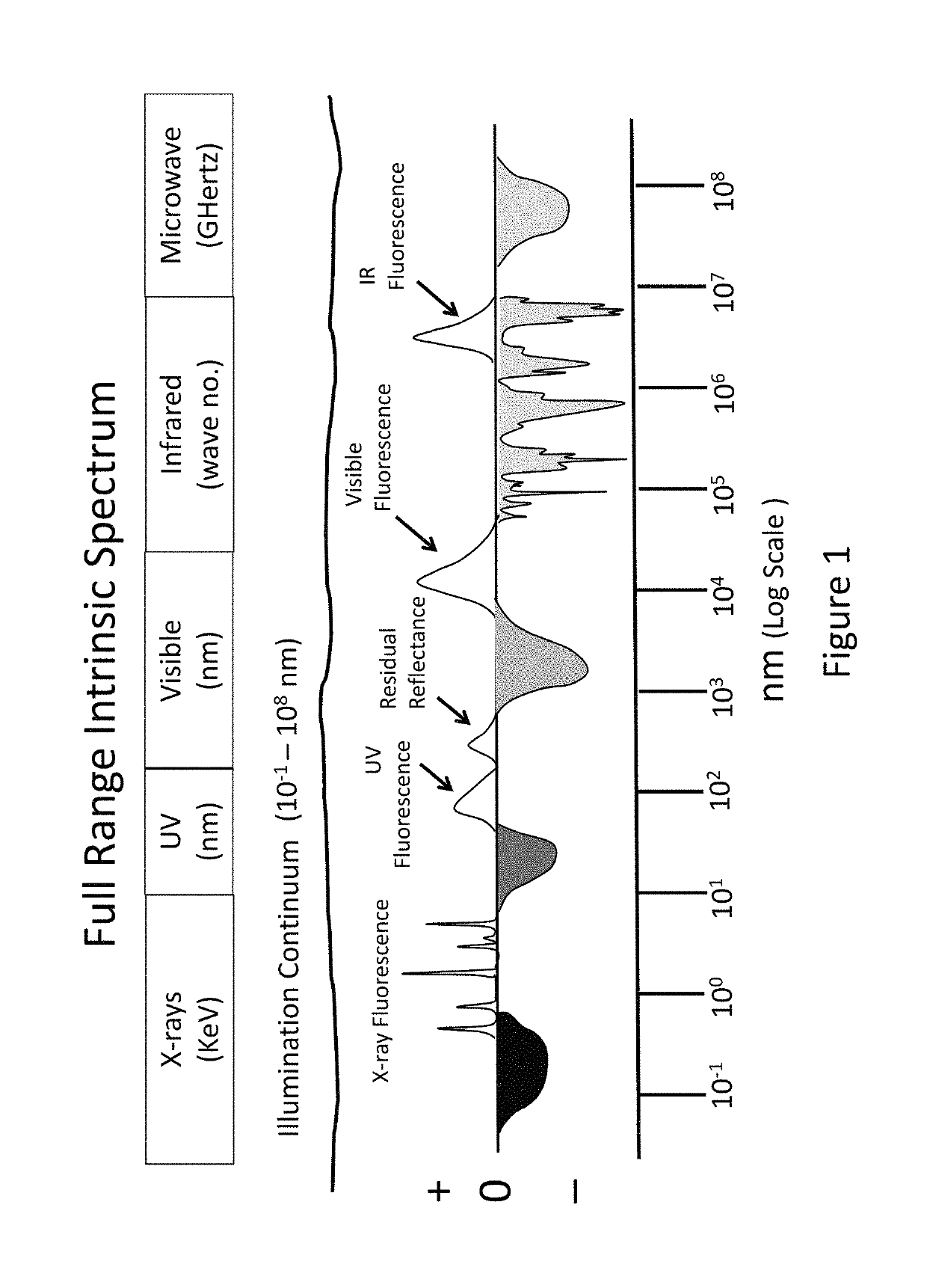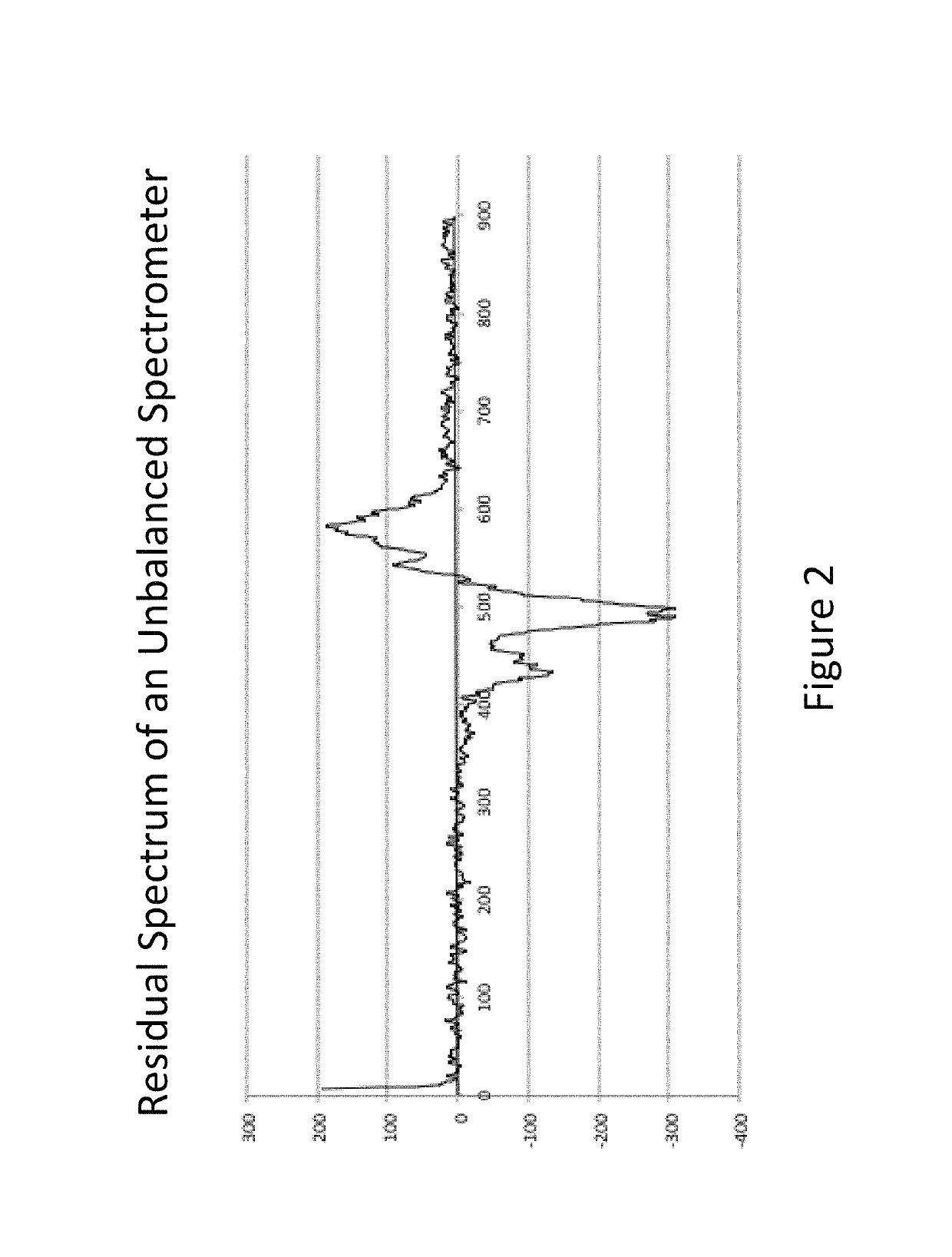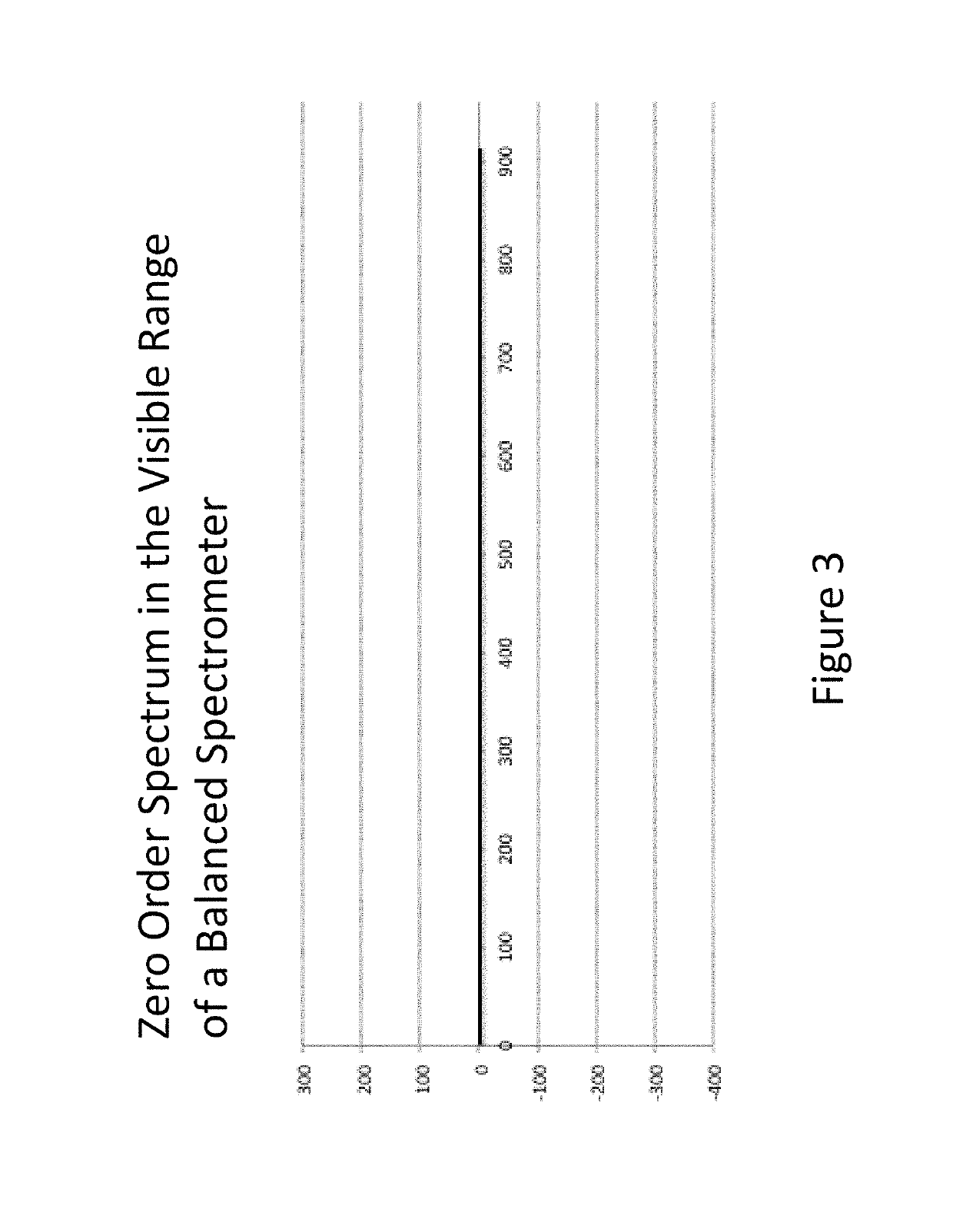Method to obtain full range intrinsic spectral signatures for spectroscopy and spectral imaging
a spectral signature and intrinsic spectral technology, applied in the field of obtaining full range intrinsic spectral signatures for spectroscopy and spectral imaging, can solve the problems of limiting the spectral information available from instruments, unable to be absolutely removed from the intrinsic spectrum, and unable to achieve the effect of hyper-spectral image and positive identification of the presence of specific elements, molecules and compounds, etc., to achieve the effect of increasing the signal intensity
- Summary
- Abstract
- Description
- Claims
- Application Information
AI Technical Summary
Benefits of technology
Problems solved by technology
Method used
Image
Examples
Embodiment Construction
[0044]The present invention provides a method to obtain a full range intrinsic spectral signature for spectroscopy and spectral imaging. This method eliminates the irrelevant spectral components and proposes a novel methodology to normalize the spectral intensities across the full wavelength ranges obtained from different instrumentation. This methodology takes advantage that the ratio of the intrinsic noise level to the intrinsic sample intensities are proportional and independent of the gain settings and duration of data collection.
[0045]The methodology of the present invention determines the intrinsic instrument noise levels as described in U.S. Pat. No. 9,435,687, incorporated herein by reference in its entirety. As shown in plots a-c of FIG. 7, the spectral components of the instrument noise vary in wavelength position and intensity due to the fact that noise is random. However, the noise level across the indicated spectral range can be averaged for each spectrum. It is expecte...
PUM
 Login to View More
Login to View More Abstract
Description
Claims
Application Information
 Login to View More
Login to View More - R&D
- Intellectual Property
- Life Sciences
- Materials
- Tech Scout
- Unparalleled Data Quality
- Higher Quality Content
- 60% Fewer Hallucinations
Browse by: Latest US Patents, China's latest patents, Technical Efficacy Thesaurus, Application Domain, Technology Topic, Popular Technical Reports.
© 2025 PatSnap. All rights reserved.Legal|Privacy policy|Modern Slavery Act Transparency Statement|Sitemap|About US| Contact US: help@patsnap.com



